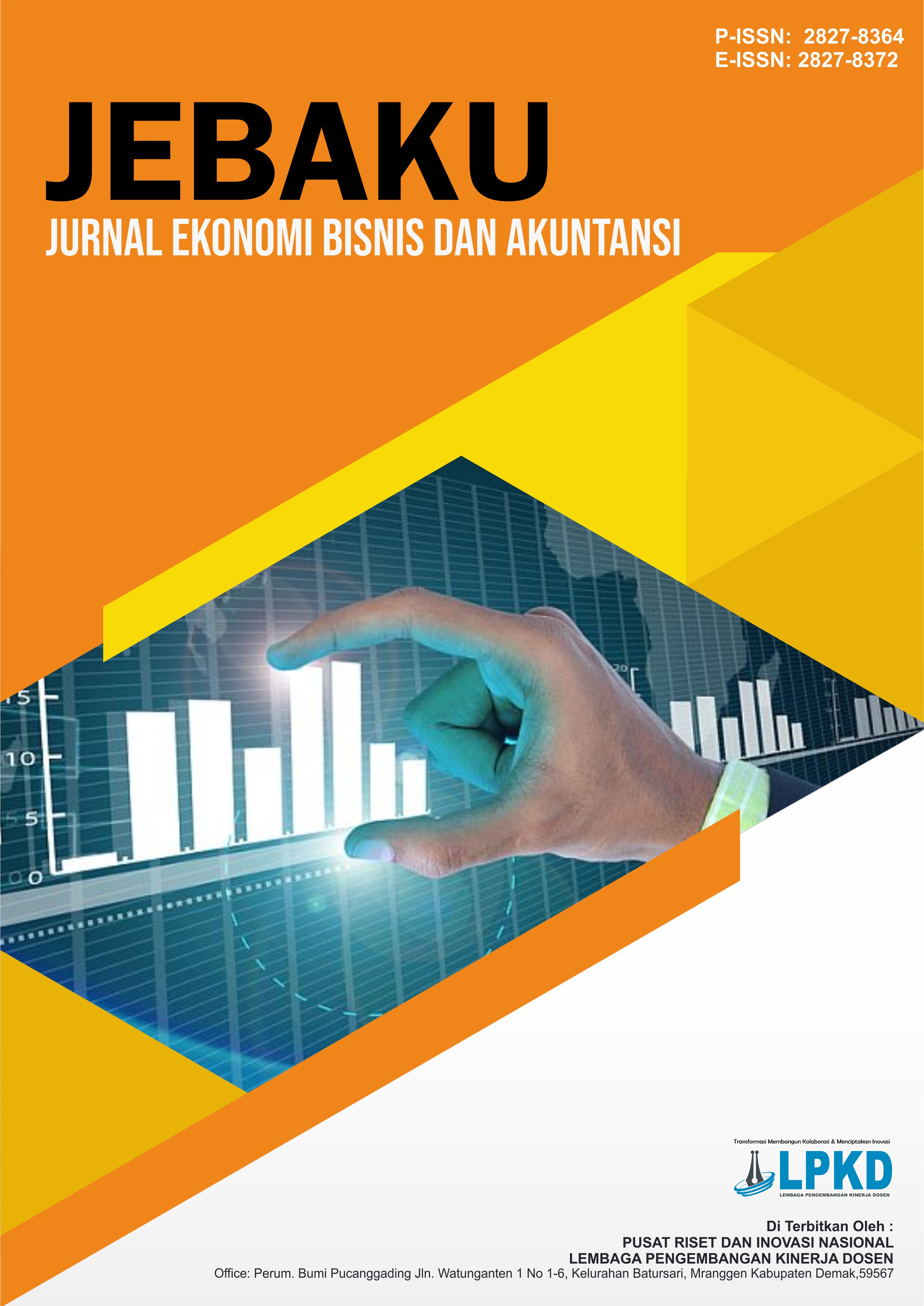PEMBELIAN IMPULSIF PELANGGAN PADA E-COMMERCE : PERAN PENGALAMAN PELANGGAN DALAM PERSONALISASI IKLAN
DOI:
https://doi.org/10.55606/jebaku.v3i2.1991Keywords:
flow experience; impulse buying; personalized advertisingAbstract
One of the advantages of using social commerce, especially Instagram, is the appearance of paid advertisements that suit consumer preferences, which is called personalization. Previous studies on the effectiveness of personalized advertising still show mixed results, both positive and negative. Based on the limitations of previous research, the focus of this research is to examine and analyze the effect of advertising personalization on advertising value which then influences impulse buying in social commerce and flow experience as moderation. This study used a survey method using 157 active Instagram users. The findings on the results of this study indicate that personalized advertising has a positive effect on advertising value and encourages impulse purchases. Then the flow experience was found to strengthen the value of advertising on impulse purchases. So the results of the study show that when users are fully engaged, happy, and excited when using social media, then receiving personalized advertisements that match their preferences will encourage impulse purchases.
Downloads
References
Abdelsalam, S., Salim, N., Alias, R. A., & Husain, O. (2020). Understanding online impulse buying behavior in social commerce: A systematic literature review. IEEE Access, 8, 89041–89058.https://doi.org/10.1109/ACCESS.2020.2993671
Baek, T., & Morimoto, M. (2012). Stay away from me. Journal of Advertising, 41(1), 59 76. https://doi.org/10.2753/JOA0091-3367410105.
Chen, Q., Feng, Y., Liu, L., & Tian, X. (2019). Understanding consumers’ reactance of online personalized advertising: A new scheme of rational choice from a perspective of negative effects. International Journal of Information Management, 44, 53–64. https://doi.org/10.1016/j.ijinfomgt.2018.09.001
Dawson, S., & Kim, M. (2010). Cues on apparel web sites that trigger impulse purchases. Journal of fashion marketing and management, 14(2), 230–246. https://doi.org/10.1108/13612021011046084
Dodoo, N. A., & Wu, L. (2019). Exploring the anteceding impact of personalised social media advertising on online impulse buying tendency. International Journal of Internet Marketing and Advertising, 13(1), 73–95. https://doi.org/10.1504/IJIMA.2019.097905
Inman, J. J., R. S. Winer, and R. Ferraro. 2009. The interplay among category characteristics, customer characteristics, and customer activities on in-store decision making.Journal of Marketing 73 (5):19–29. doi: 10.1509/jmkg.73.5.19
Kim, Y. J., & Han, J. (2014). Why smartphone advertising attracts customers: A model of web advertising, flow, and personalization. Computers in Human Behavior, 33, 256–269. https://doi.org/10.1016/j.chb.2014.01.015
Lee, E. B., Lee, S. G., & Yang, C. G. (2017). The influences of advertisement attitude and brand attitude on purchase intention of smartphone advertising. Industrial Management and Data Systems, 117(6), 1011–1036. https://doi.org/10.1108/IMDS-06-2016-0229
Liang, T. P., & Turban, E. (2011). Introduction to the special issue social commerce: A research framework for social commerce. International Journal of Electronic Commerce, 16(2), 5–13. https://doi.org/10.2753/JEC1086-4415160201
Liu, C.-L. E., Sinkovics, R. R., Pezderka, N., & Haghirian, P. (2012). Determinants of consumer perceptions toward mobile advertising: A comparison between Japan and Austria. Journal of Interactive Marketing, 26(1), 21–32. https://www.researchgate.net/publication/229892383_Determinants_of_Consumer_Perceptions_toward_Mobile_Advertising_-_A_Comparison_between_Japan_and_Austria
Olsen, S. O., Tudoran, A. A., Honkanen, P., & Verplanken, B. (2016). Differences and similarities between impulse buying and variety seeking: A personality-based perspective. Psychology & Marketing, 33(1), 36–47. https://researchportal.bath.ac.uk/en/publications/differences-andsimilarities-between-impulse-buying-and-variety-s
Rook, D. W., & Fisher, R. J. (1995). Normative behavior influences on impulsive buying trait aspects of buying impulsiveness. Journal of Consumer Research, 22(3), 305–313. https://doi.org/10.1086/209452
Shahpasandi, F., Zarei, A., & Nikabadi, M. S. (2020). Consumers’ impulse buying behavior on Instagram: Examining the influence of flow experiences and hedonic browsing on impulse buying. Journal of Internet Commerce, 19(4), 437–465. https://doi.org/10.1080/15332861.2020.1816324
Sun, T., & Wu, G. (2011). Trait predictors of online impulsive buying tendency: A hierarchical approach. Journal of Marketing Theory and Practice, 19(3), 337–346. https://doi.org/10.2753/MTP1069-6679190307
Webster J, Trevino LK, Ryan L. 1993. The dimensionality and correlates of flow in human computer interactions. Computers in Human Behavior 9(4): 411–426
Zhang, J., & Mao, E. (2016). From online motivations to ad clicks and to behavioral intentions: An empirical study of consumer response to social media advertising. Psychology and Marketing, 33(3), 155–164. https://doi.org/10.1002/mar.20862
Zhang, Y., Liu, L., & Ho, S. Y. (2020). How do interruptions affect user contributions on social commerce? Information Systems Journal, 30(3), 535–565. https://doi.org/10.1111/isj.1226
Downloads
Published
How to Cite
Issue
Section
License
Copyright (c) 2023 Isna Ayu Safitri Kusuma Dewi, Fibia Sentauri Cahyaningrum, Maria Arista; Vicky Indarto Setyono

This work is licensed under a Creative Commons Attribution-ShareAlike 4.0 International License.










